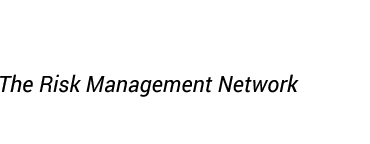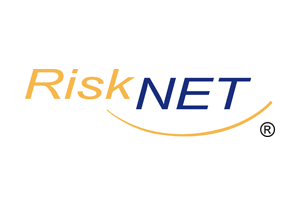The 2025 edition of the Coface Country & Sector Risk Handbook provides a detailed and data-driven perspective on the evolving global risk landscape. It reflects a world characterized by economic fragmentation, political volatility, and structural weaknesses, particularly in advanced economies. The report evaluates 160 countries and 13 key industrial sectors, offering an assessment of credit and payment risks, as well as the general business climate. Coface relies on a multifaceted methodology that integrates macroeconomic indicators, structural and institutional factors, political risks, and proprietary data from its own credit insurance portfolio, notably real-world payment behavior.
Coface's methodology is robust and multidimensional. It evaluates a country’s risk using:
- Macroeconomic factors: GDP growth, inflation, fiscal and current account balances, public debt.
- Political and social risk: Stability of governance, institutional quality, potential for social unrest.
- Structural characteristics: Level of development, climate risk exposure, regulatory environment.
- Coface proprietary data: Especially payment behavior and default experiences from insured transactions.
Countries are rated on an 8-tier scale (from A1 – very low risk – to E – extreme risk). A separate Business Climate Assessment complements this, evaluating the reliability of financial reporting, legal protections for creditors, and ease of doing business. This framework seeks to capture both short-term credit risks and the long-term reliability of a country’s business and legal environment.
The Return of Political Instability in Advanced Economies
A key finding of the 2025 report is that while inflationary pressures are receding globally, many industrialized countries face increasing financial and political fragilities. Economic performance is no longer sufficient to offset the structural and political risks that continue to accumulate, especially in Western democracies. This is compounded by what Coface terms a "global election super-cycle": in 2024 and 2025, elections are or will be held in countries representing over half of the world's population, creating an environment of increased uncertainty.
The U.S. Outlook: Growth Meets Geopolitical Volatility
The United States remains one of the world’s economic engines, but Coface highlights a rising level of uncertainty linked to the return of Donald Trump to the presidency. The administration's policy trajectory points toward protectionism, deregulation, and expansionary fiscal policies, which could trigger higher inflation or renewed trade tensions. While the U.S. maintains an A2 risk rating, Coface notes that this is under growing pressure given domestic political polarization and global economic spillovers.
Germany and France: Economic Strength, Political Drift
Germany is rated A3, with Coface citing political instability as a growing concern. Economic weaknesses tied to its export model –particularly its reliance on demand from China – are now amplified by internal political fragmentation. Snap elections and policy uncertainty may further delay necessary reforms in energy, infrastructure, and digital transformation. Structural vulnerabilities in its manufacturing sector are also prominent.
France shares the same A3 rating and faces many of the same issues: stagnating industrial productivity, constrained fiscal space, and a government struggling to implement reforms in the face of political fragmentation. Public debt is rising, projected to reach 117% of GDP, while competitiveness indicators remain weak. Coface also notes persistent labor market rigidities and growing social tensions.
Southern Europe Under Pressure: Italy's Downgrade
Italy has been downgraded to a B risk rating. The report highlights disinflationary effects that have squeezed corporate margins, a fragile labor market, and high levels of public and private debt. Italy’s economic structure – dominated by small and medium enterprises with low investment capacity – further compounds its risk exposure. The country’s fiscal and political fragility makes it particularly vulnerable to external shocks and interest rate volatility.
The UK After Brexit: Still Searching for Stability
The United Kingdom is also rated A3, with Brexit-related disruptions continuing to weigh on productivity and investment. Coface points to ongoing political volatility and limited fiscal room as constraining factors. The country’s long-standing structural issues – low productivity growth, regional inequalities, and skill mismatches – remain largely unaddressed.
Bright Spots in a Murky Landscape: The Nordic Exception
Nordic countries such as Sweden and Denmark, as well as Switzerland, continue to receive top ratings (A1), primarily due to strong institutions, robust public finances, and diversified economies. However, even these countries are not entirely immune to global demand fluctuations and geopolitical tensions, particularly in trade and energy markets.
United States – A2 Risk Rating
– The U.S. economy outperformed in 2024, but Coface warns of increased volatility under a renewed Trump presidency.
– Aggressive deregulation and tax cuts may boost short-term growth, but trade and immigration policies could strain global value chains and provoke inflation.
– Coface highlights uncertainty in policy implementation and a potential clash with the Federal Reserve.
Germany – A3 Risk Rating
– Political instability (coalition collapse, snap elections) compounds economic fragility.
– Industrial production is dampened by weak global demand and supply chain tensions with China.
– Germany remains vulnerable due to its export-heavy, China-dependent model.
France – A3 Risk Rating
– Persistent political fragmentation limits fiscal reform.
– Coface warns of deteriorating public finances (public debt forecasted to rise to 117% of GDP).
– Weak competitiveness and a shrinking industrial base are long-standing issues.
Italy – B Risk Rating
– High public and private debt and sluggish growth define Italy’s outlook.
– Disinflation has significantly eroded corporate margins.
– Employment fragility and overreliance on tourism and manufacturing are risk multipliers.
United Kingdom – A3 Risk Rating
– Brexit aftershocks linger, and productivity growth remains weak.
– Business investment is fragile, and political uncertainties persist amid leadership changes and policy reversals.
Deeper Problems: Why the Risks Are Structural, Not Just Cyclical
The report further emphasizes that the risks facing advanced economies are not only cyclical but increasingly structural. Deindustrialization trends, an aging population, declining educational outcomes, and underinvestment in infrastructure are cited as long-term challenges. The erosion of consensus in domestic politics, as seen in growing support for populist or extremist parties, is also identified as a factor that undermines predictability and investor confidence.
Real-Time Risk Intelligence
Coface’s methodology involves not only statistical indicators but also forward-looking analyses. The inclusion of proprietary data from insured trade receivables allows for a real-time understanding of payment behavior and emerging financial distress. This distinguishes Coface from many other rating models that rely purely on official statistics. Additionally, the report includes stress testing and scenario modeling to capture non-linear risks, such as geopolitical escalation or global financial tightening.
Conclusion: Managing Risk in an Age of Permanent Uncertainty
Overall, the 2025 Coface Handbook depicts a risk environment that is no longer dominated by acute inflation but by fragmented and fragile growth. For industrialized countries, the most pressing concerns now lie in political volatility, unsustainable fiscal trajectories, and structural economic decline. These issues, if unaddressed, could weaken long-term resilience even in high-income economies. Coface’s analysis suggests that risk management strategies must now pay greater attention to non-traditional factors such as governance quality, demographic change, and systemic exposure to climate or digital vulnerabilities.
Coface sees global growth stabilizing at 2.6% in 2025, a slight decline from 2024. However, the message is clear: the global risk landscape remains highly fragmented. While the specter of inflation has subsided, political and financial fragility in advanced economies is rising. As the global economy enters a period of slower growth and heightened unpredictability, the Handbook positions itself as a reference point for navigating the complex interplay of economic, political, and structural risks that define the post-pandemic world.




